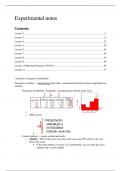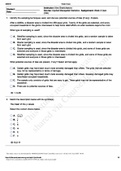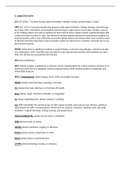Samenvatting
Summary Experimental Research Methods - Grade 8
- Instelling
- Tilburg University (UVT)
This is a summary for the course Experimental Research Methods. I included both pictures and SPSS snippets in the summary to make it more clear. I received an 8 in this course using this summary and practising with the tutorial assignments.
[Meer zien]








